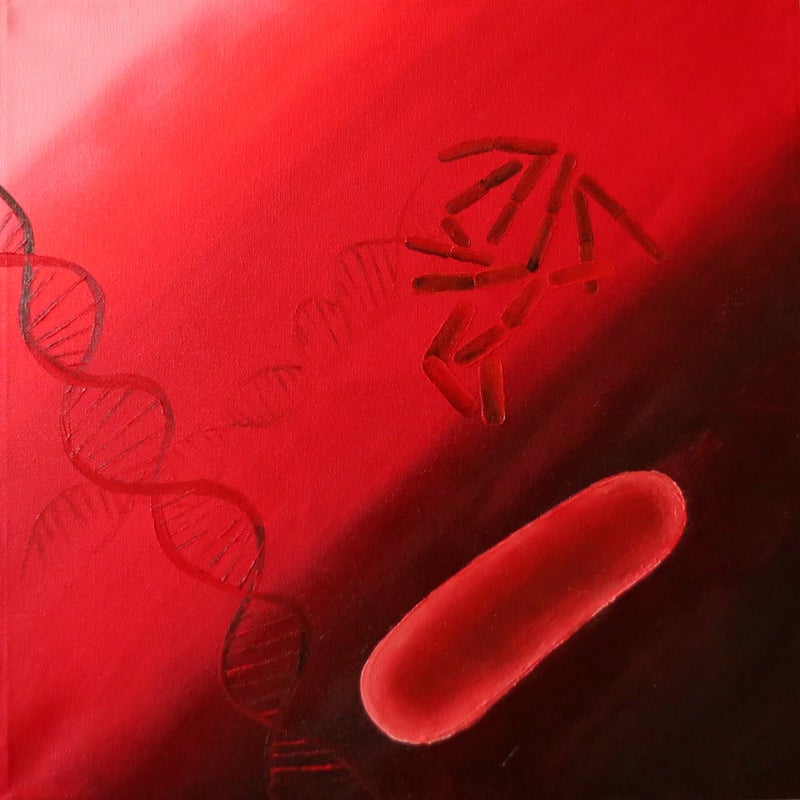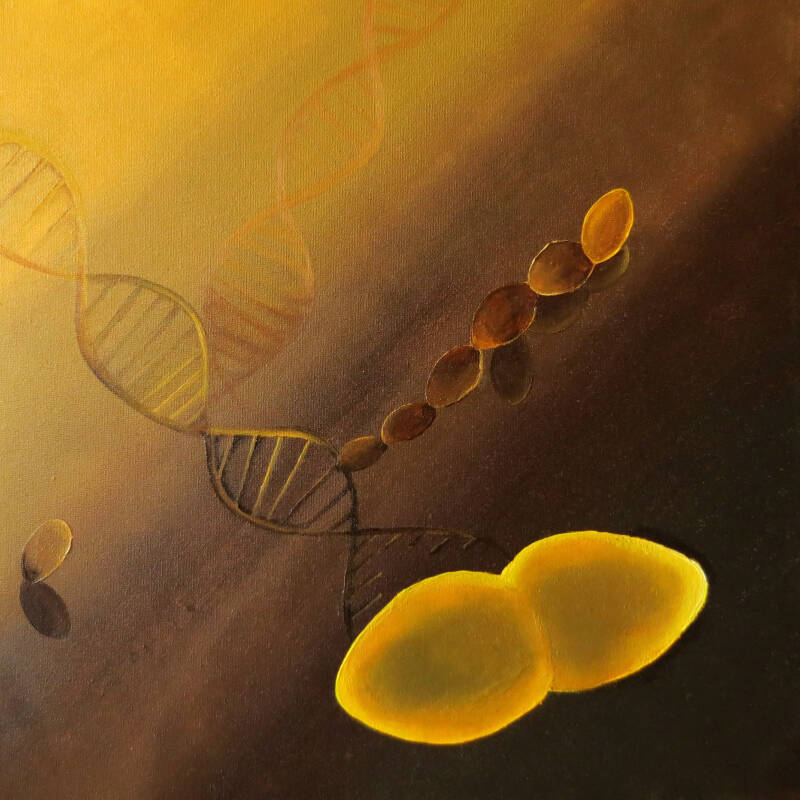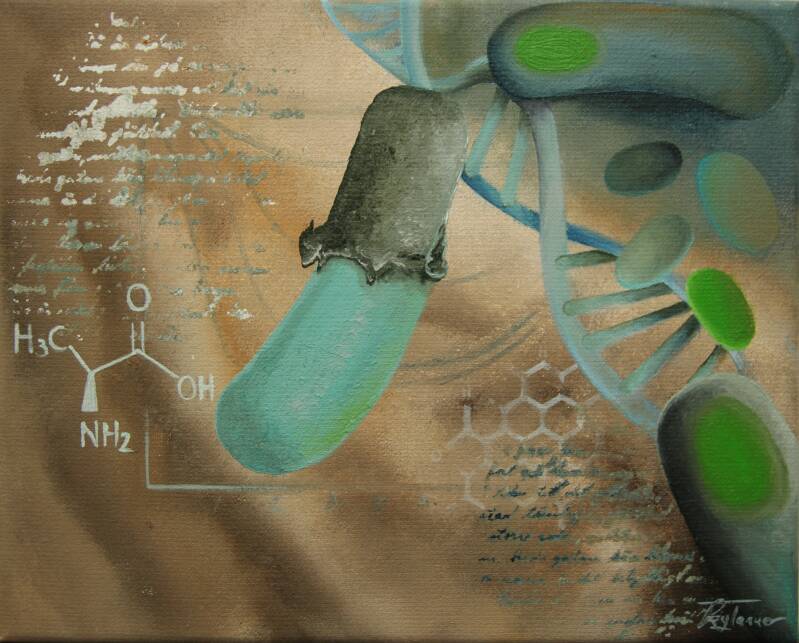Bug art
As a microbiologist, I am fascinated by all tiny forms of life we cannot see with the naked eye. Even though advanced microscopy techniques allow us to at least get a pretty good idea of what bacteria and viruses look like, many aspects of the visual are filled by the observer's imagination. This is exactly how I get to combine my interest and passion for science with my love of art; let me know what you think! I also do commissions on bug art. Please do not hesitate to contact me to discuss options.
"Bacillus subtilis"
Acrylic on 3D canvas, 60 x 60 cm
Bacillus subtilis is a soil dwelling organism and also present in the gut of humans and animals. To increase its chance of survival, cells are motile and they have the ability to form spores and biofilms. Generally, Bacillus subtilis is harmless to humans. However, it is a major concern to the food industry, mainly due to its extreme resistance mechanisms. Its ability to survive certain food processing or sanitation strategies can in some cases lead to spoilage of foods. On the other hand, Bacillus subtilis is also used by other industries as a microscopic factory for the production of enzymes. Finally, some Bacillus subtilis strains are known to have probiotic effects in animals and humans, which are exploited due to its ability to survive the gastointestinal tract.
This painting was donated to the Molecular Genetics group of the University of Groningen, The Netherlands.
"Lactococcus lactis"
Acrylic on 3D canvas, 60 x 60 cm
Lactococcus lactis is a harmless lactic acid bacterium that is used a lot for the production of cheese and other dairy products. It converts sugars into lactic acid, which is a beneficial trait for producing fermented dairy products, such as butter milk, cheese, beer and wine. Under the microscope, one can appreciate the strings and groups of cocci.
Lactococcus lactis is one of the best characterized bacterial species in the world and often functions as a model organism for scientific research on molecular processes in a wide range of Gram-positive bacteria, in particular lactic acid bacteria.
This painting was donated to the Molecular Genetics group of the University of Groningen, The Netherlands.
"Streptococcus pneumoniae"
Acrylic on 3D canvas, 60 x 60 cm
Streptococcus pneumoniae is an opportunistic pathogen, which means that many people are carrier without showing any symptoms of disease. The bacterium is mainly present in the nasal cavities of humans without doing any harm. However, in some cases, for instance in case of a weaker immune system, this bacterium can cause nasty medical complications such as pneumonia and meningitis. Nowadays, many of these infections can be treated with antibiotics, but for how long? Streptococcus pneumoniae is often used as a modelorganism in scientific research on antibiotic resistance mechanisms in bacteria, which is an ever growing threat to modern health care.
This painting was donated to the Molecular Genetics group of the University of Groningen, The Netherlands.
"Germination"
Acrylic on canvas, 60 x 50 cm
Some bacterial species (like Bacillus subtilis) are able to form spores. These are small entities of the cell that do not grow, but are also not dead. They are dormant and in this state are extremely resistant against all sorts of external stresses, such as little availability of nutrients, heat, pressure, chemicals and desinfectants. But even though spores do not do anything, they can still monitor the environment and respond to improving conditions by the process of germination. When conditions support growth, they spores break out of their protective layers and resume the process of cell division an growth.
This painting was a graduation gift to my PhD student Antonina Krawczyk in 2017
"SARS-CoV-2"
Acrylic on canvas, 100 x 70 cm, SOLD
The virus, also known as the 'Wuhan virus'; the cause of Covid-19 and the pandemic that started in 2020. Our lives and the way we were used to live it will never be the same as prior to this crisis. This painting was part of a series of five for the Corona art auction for charity in 2020.
The proceeds were entirely donated to the Dutch food bank and Because We Carry
"Spores in food"
Water colour on paper, A3
Some bacterial species (like Bacillus subtilis) are able to form spores. These are small entities of the cell that do not grow, but are also not dead. They are dormant and in this state are extremely resistant against all sorts of external stresses, such as little availability of nutrients, heat, pressure, chemicals and desinfectants. When they survive pasteurization or even sterilisation processes, they can cause food spoilage when the food product in which they reside can support germination growth.
Available for purchase (framed)
















